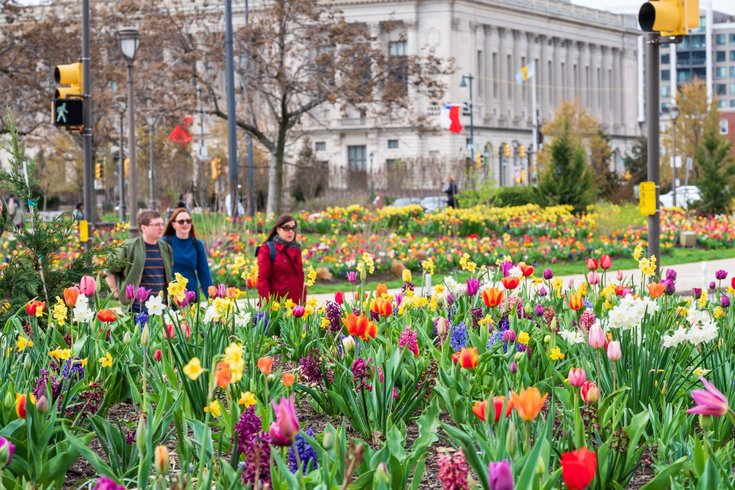
December 26, 2023
 Provided Image/Pennsylvania Horticultural Society
Provided Image/Pennsylvania Horticultural Society
The USDA's Zone Hardiness map shows warmer temperatures across the country. With less harsh winters, gardeners can expect earlier blooms come spring.
With the first week of winter officially underway, many local gardeners are adding compost, cuddling potted plants against the house and making room for outdoor plants to come indoors. Yet winterizing measures don't have to be as intense in Philly as in previous years, according to the U.S. Department of Agriculture.
In November, the USDA released an updated Zone Hardiness Map. Last updated in 2012, the map tracks cold temperatures across the country and designates areas by zone. Gardeners use this information to estimate plant hardiness — what cold temperatures plants can withstand — and decide what plants to grow in their gardens. The new map uses average low annual temperatures from 1991 to 2020.
The map is divided into 13 zones, each split into A and B groups. Zone 1a represents -60 degrees Fahrenheit to -55, Zone 1b represents -55 to -50, and so on. In 2012, Philadelphia was in both Zones 7a and 7b, but the new map has the city solidly in 7b, meaning warmer temperatures. Parts of Montgomery County moved up to 7b, and sections of Delaware County jumped to 8a.
The USDA said the temperature increases are "not necessarily reflective of global climate change" because of more sophisticated data collection methods and the variable nature of annual minimum temperatures. But local gardener Andrew Bunting, the vice president of horticulture for the Pennsylvania Horticultural Society and a consultant on the new map, said climate change is a factor.
"We've had, I would say, increasingly warmer winters and generally less snowfall," Bunting said. "Things that were really considered marginally hardy even 20 years ago are now perfectly hardy.”
Bunting said the USDA map is the gold standard for planting for both gardeners and researchers. Data was collected from over 13,000 weather stations across the country, about double the number of stations used for the 2012 map.
For gardeners planning spring plantings, warmer temperatures reflected in the new map mean there are more options available. Bunting noted that Southern magnolias, for example, were a rare species in this area when he moved here in the 1980s. Now, they're perfectly hardy to the area, he said, with no signs of winter burn or dieback that would come from colder temperatures.
At the same time, plants also are starting to bloom earlier.
“People that either anecdotally or through science keep phenological data, which is when plants come into flower, have seen earlier spring flowering across the board," Bunting said. "Snowdrops bloom earlier, daffodils bloom earlier, all the things that bloom in the spring, just in general, bloom earlier. And then lots of things that I would have considered not hardy or marginally hardy are becoming hardier because the winters aren't as cold."
For gardeners, the map's update is no shock, Bunting said, as nurseries have stocked hellebores, crape myrtles and other plants previously deemed non-hardy in recent years. But some people worry about a more unstable growing environment — for the most part, the area isn't having the really cold winters it used to, so some plants may go into a quasi-dormant state in the winter, meaning they may be more vulnerable when the area does see really cold temperatures.
Bunting also noted that invasive insect populations typically killed by cold winters are surviving in the warmer temperatures, and that exotic, invasive plants that can survive in warmer temperatures are arriving.
While there might be more planting options, Bunting said there are repercussions and that warmer temperatures will likely keep coming.
"It does give gardeners the ability to grow things they might not have been able to grow before, but it is a reflection, a real reflection, a scientific reflection of global climate change," Bunting said. "I would say, if this is what's happened in the last 10 years, this will continue to happen, so the likelihood of even warmer winters I would say is pretty likely."